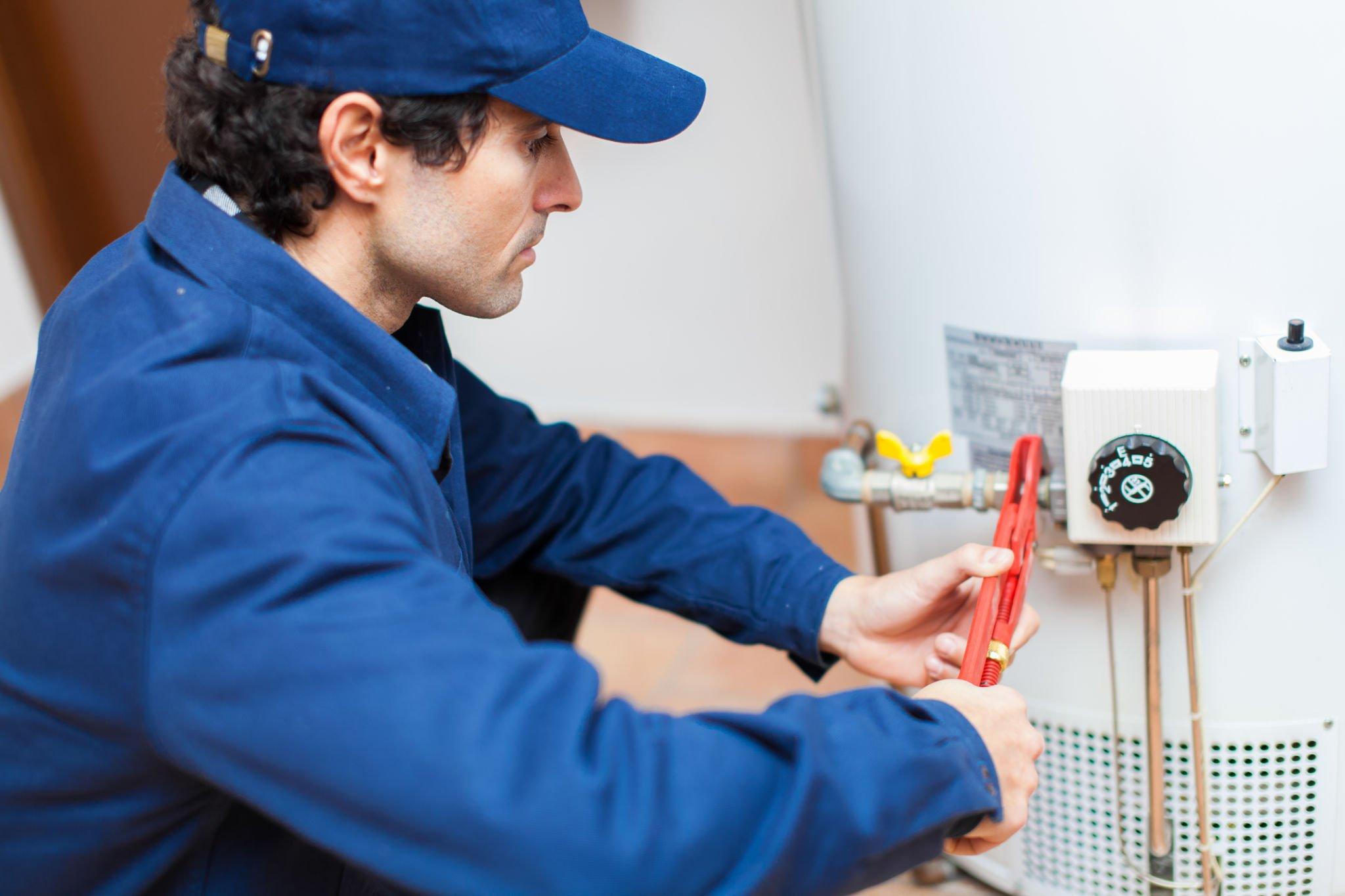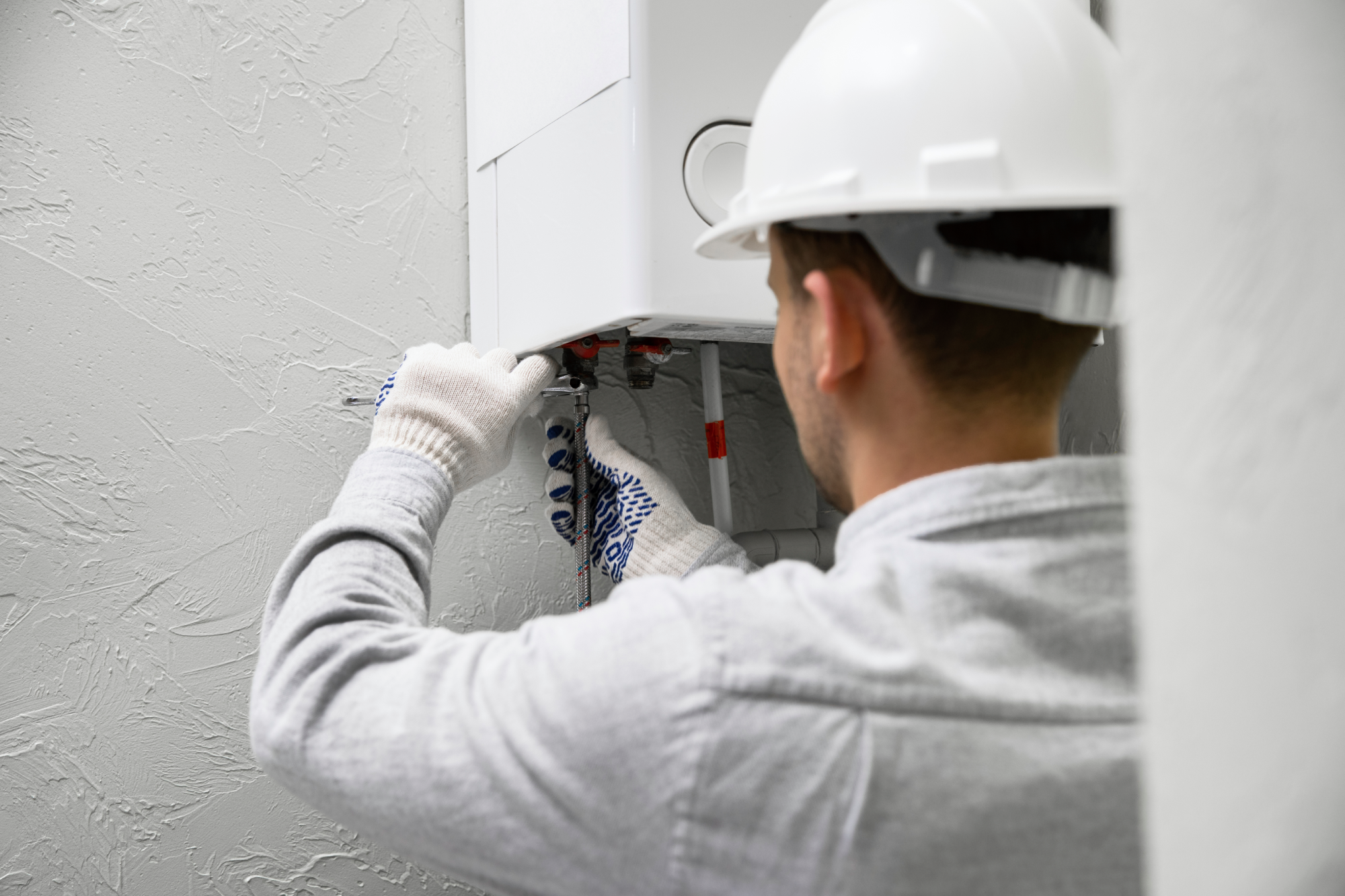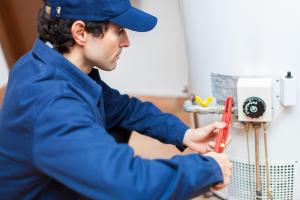Imagine your water heater as the unsung hero of your home, quietly working to provide you with warm showers and clean dishes.
But what happens when this dependable appliance starts acting up? How do professionals tackle water heater repair near me and keep it running smoothly?
In this discussion, we will unveil the expert insights that will shed light on the secrets of these professionals. From identifying issues to handling temperature fluctuations, you will gain valuable knowledge on how to keep your water heater in optimal condition.
So, if you’re ready to discover the tricks of the trade and ensure your water heater’s longevity, prepare to dive into this insightful exploration.
Identifying Water Heater Issues
If you’re experiencing problems with your water heater, there are a few key signs to look out for that can help you identify the issue.
When it comes to water heater repair, it’s always beneficial to have expert insights to guide you. Professionals who tackle water heater issues every day have shared their knowledge to make it easier for homeowners like you to address these problems.
One of the most common signs of a water heater issue is a lack of hot water. If you turn on the faucet and only get cold water, it’s a clear indication that something is wrong with your water heater.
Another sign to watch out for is a decrease in water pressure. If you notice that your showers aren’t as strong as they used to be, it could be a sign of a water heater problem.
Additionally, strange noises coming from your water heater can also indicate an issue. If you hear rumbling, banging, or popping sounds, it’s best to call in professionals for a thorough inspection.
Lastly, if you notice any leaks or puddles around your water heater, it’s crucial to address the issue promptly to avoid further damage.
Conducting Thorough Inspections
To conduct a thorough inspection of your water heater, start by checking for any visible signs of damage or wear. As a homeowner, it’s essential to be proactive in maintaining your water heater to avoid costly repairs or replacements.
Begin by examining the exterior of the unit for any leaks, rust, or corrosion. Look closely at the pipes, valves, and connections, ensuring they’re secure and free from any signs of leakage.
Next, inspect the tank for any cracks, dents, or bulges, as these can indicate structural issues that may affect the performance of your water heater. Additionally, pay attention to the temperature and pressure relief valve, ensuring it’s functioning correctly.
A professional water heater repair expert will also conduct a thorough internal inspection. They will check the anode rod, heating elements, and thermostat to ensure they’re functioning properly.
Performing Necessary Maintenance Tasks
Regular maintenance tasks are essential for ensuring the longevity and efficient operation of your water heater. When it comes to water heater repair, performing necessary maintenance tasks is crucial. By following expert insights, you can keep your water heater in optimal condition and prevent costly repairs in the future.
One of the most important maintenance tasks is flushing the tank regularly. Over time, sediment and mineral deposits can build up in the tank, affecting its efficiency. Flushing the tank removes these deposits and helps maintain the heater’s performance.
Inspecting the pressure relief valve is another important task. This valve helps prevent excessive pressure from building up in the tank, which can lead to leaks or even explosions. Regularly checking the valve and ensuring it’s working properly is essential for the safety of your water heater.
Professionals also recommend checking the sacrificial anode rod. This rod attracts corrosive elements, protecting the tank from rust and corrosion. Over time, the rod can deteriorate and may need to be replaced. Regularly inspecting and replacing the anode rod can prolong the life of your water heater.
Lastly, professionals emphasize the importance of checking for any leaks or unusual noises. Leaks can indicate a problem with the tank, while strange noises may be a sign of sediment buildup or a failing component. Addressing these issues promptly can prevent further damage and the need for costly repairs.
Repairing or Replacing Faulty Components
When it comes to water heater repair, addressing faulty components is crucial for maintaining optimal performance and avoiding costly repairs. If you notice any issues with your water heater, it’s important to take immediate action to diagnose and fix the problem. Whether it’s a malfunctioning thermostat, a leaking valve, or a faulty heating element, repairing or replacing these components is essential to ensure that your water heater operates efficiently.
Repairing faulty components is a job best left to professionals who specialize in water heater service. They have the knowledge and expertise to accurately identify the problem and provide the necessary repairs. Attempting to fix the issues yourself can lead to further damage and potentially void any warranties on your water heater.
When a component in your water heater needs repair, the service technician will first assess the situation and determine the best course of action. They will then proceed with the necessary repairs, using high-quality replacement parts to ensure the longevity and performance of your water heater.
In some cases, the faulty component may be beyond repair and will require a replacement. This is especially true for older water heaters or components that are no longer functioning properly. In such situations, the service technician will recommend the most suitable replacement parts to meet your water heater’s needs.
Ensuring Proper Thermostat Calibration
Proper thermostat calibration is essential to ensure efficient operation of your water heater. When your water heater’s thermostat isn’t properly calibrated, it can lead to issues such as insufficient hot water, inconsistent temperatures, or even complete failure of the unit. To avoid these problems, it’s important to regularly check and calibrate your water heater’s thermostat.
If you aren’t familiar with the process or don’t have the necessary tools, it’s recommended to seek professional help from water heater repair services near you. They have the expertise and experience to accurately calibrate your thermostat and ensure optimal performance of your water heater.
When you contact a water heater repair service for thermostat calibration, they will first inspect the unit to identify any underlying issues. They will then use specialized tools and techniques to adjust the thermostat settings to the manufacturer’s specifications. This will ensure that the thermostat accurately reads and maintains the desired temperature of the water.
Flushing and Cleaning the Water Heater
To ensure optimal performance of your water heater, it’s important to regularly flush and clean the unit. Over time, sediment and mineral deposits can build up inside your water heater, reducing its efficiency and potentially causing damage. Flushing and cleaning your water heater helps to remove these deposits and keep your unit running smoothly.
When flushing your water heater, start by turning off the power supply and shutting off the water valve. Attach a hose to the drain valve and place the other end in a suitable drainage area, like a floor drain or outside. Open the drain valve and let the water flow out until it runs clear. This process helps to remove any sediment or debris that may have accumulated at the bottom of the tank.
After flushing, it’s also important to clean the water heater. You can do this by removing the access panel and inspecting the inner components for any signs of dirt or debris. Use a soft brush or cloth to gently clean the surfaces and remove any buildup. Be sure to also check the anode rod and replace it if necessary, as it helps prevent corrosion within the tank.
Addressing Leaks and Water Pressure Problems
If you’ve noticed leaks or water pressure problems in your water heater, it’s important to address these issues promptly to prevent further damage and ensure efficient operation.
Leaks can indicate a variety of problems, such as a faulty valve, a loose connection, or a cracked tank. Start by inspecting the pressure relief valve and the connections to ensure they’re properly sealed.
Tighten any loose fittings and replace any damaged valves. If the leak persists, it may be necessary to replace the tank itself.
Water pressure problems can be caused by a clogged or faulty pressure reducing valve, or a buildup of sediment in the pipes. Check the pressure reducing valve to see if it needs to be cleaned or replaced.
Flushing the water heater regularly can help remove sediment and improve water pressure. If the issue persists, it may be necessary to call a professional plumber to assess and resolve the problem.
Dealing With Pilot Light and Ignition Issues
Having trouble with the pilot light or ignition on your water heater? It can be frustrating when your water heater fails to light or stay lit, leaving you without hot water. Fortunately, there are a few common issues that you can easily troubleshoot and resolve.
Firstly, check if the pilot light is lit. If it’s out, you can relight it by following these steps: turn the gas control knob to the ‘off’ position, wait for a few minutes to allow any gas to dissipate, then turn the knob to the ‘pilot’ position. While holding down the reset button, use a long lighter to ignite the pilot light. Once lit, continue to hold the reset button for about a minute and then release it. If the pilot light goes out after releasing the button, it could indicate a faulty thermocouple that needs to be replaced.
If the pilot light stays lit but the burner doesn’t ignite, there may be an issue with the ignition system. Check if the igniter is dirty or damaged. Clean it with a soft brush or replace it if necessary. Additionally, ensure that the gas supply to the water heater is turned on and the gas valve is fully open.
If all else fails, it’s best to consult a professional plumber to diagnose and repair the issue.
Handling Temperature Fluctuations
When dealing with issues related to the pilot light or ignition on your water heater, it’s important to also address any temperature fluctuations you may be experiencing. Temperature fluctuations can be a frustrating problem, as they can make it difficult to enjoy a consistent supply of hot water. Fortunately, there are several steps you can take to handle this issue.
First, check the temperature setting on your water heater. It’s possible that the temperature is set too high or too low, leading to fluctuations in the water temperature. Adjust the temperature to a comfortable level and see if the fluctuations persist.
Next, inspect the thermostat on your water heater. The thermostat controls the heating element and ensures that the water is heated to the desired temperature. If the thermostat is faulty or needs calibration, it can cause temperature fluctuations. Consider replacing or recalibrating the thermostat to resolve the issue.
Another potential cause of temperature fluctuations is a buildup of sediment in the tank. Over time, sediment can accumulate at the bottom of the tank, affecting the heating performance. To address this, drain and flush the tank to remove any sediment. This will help improve the efficiency of your water heater and reduce temperature fluctuations.
If the above steps don’t resolve the issue, it’s recommended to consult a professional plumber. They have the expertise and tools to diagnose and fix more complex problems with your water heater, ensuring that you have a consistent supply of hot water without any temperature fluctuations.
Providing Tips for Preventive Maintenance
To ensure the longevity and optimal performance of your water heater, it’s important to implement preventive maintenance measures.
By taking proactive steps, you can avoid unexpected breakdowns and costly repairs.
One crucial preventive maintenance task is to regularly check the pressure relief valve. This valve is designed to release excess pressure from the tank and prevent potential explosions. Test it at least once a year by lifting the lever and allowing some water to flow out.
Additionally, flushing the tank annually is essential to remove sediment buildup, which can cause the tank to overheat and reduce its efficiency. Simply attach a hose to the drain valve, turn off the power supply, and let the water flow until it runs clear.
Inspecting the anode rod is another vital maintenance step. This sacrificial rod protects the tank from corrosion, so it’s crucial to check it every three years and replace it if it’s more than 50% depleted.
Lastly, keep an eye on the temperature and pressure settings to ensure they’re within the recommended range.
So, if you’re experiencing any issues with your water heater, don’t hesitate to call a professional.
They’ve the expertise to identify and fix any problems, whether it’s a faulty component, thermostat calibration, leaks, or ignition issues.
With their help, you can ensure your water heater is functioning properly and avoid any future breakdowns.
Don’t forget to follow their tips for preventive maintenance to prolong the lifespan of your water heater.
Why Choose Us?
The Water Heater Warehouse is your go-to destination for expert water heater repair services in your local area. We specialize in diagnosing and fixing a wide range of water heater issues promptly and efficiently. Our skilled technicians are dedicated to ensuring that your water heater operates at peak performance, providing you with the comfort and convenience you deserve. Trust The Water Heater Warehouse for reliable and affordable water heater repair solutions near you.
The Water Heater Warehouse
1114 E Truslow Ave, Fullerton, CA 92831
(714) 244-8562
https://thewaterheaterwarehouse.com/










